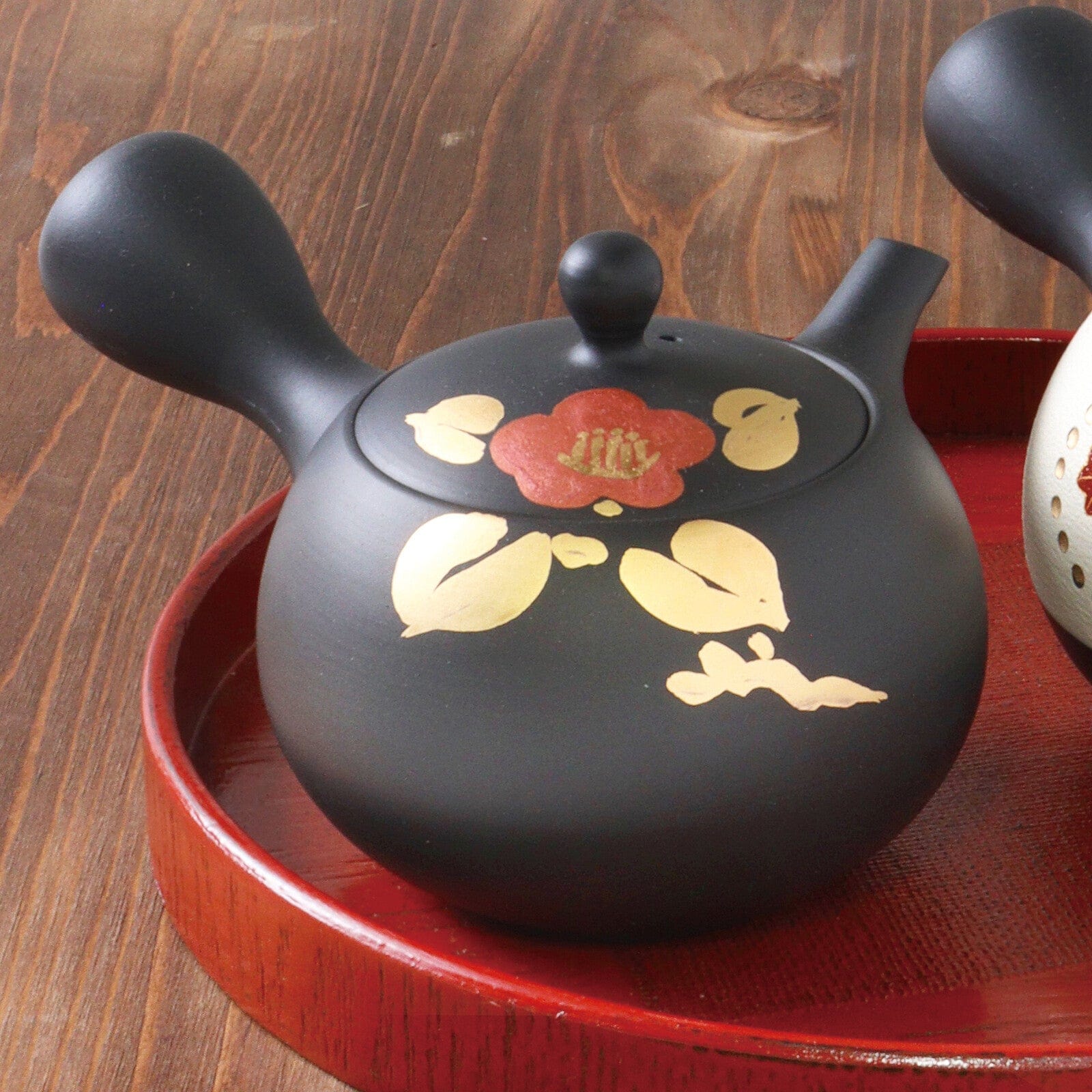
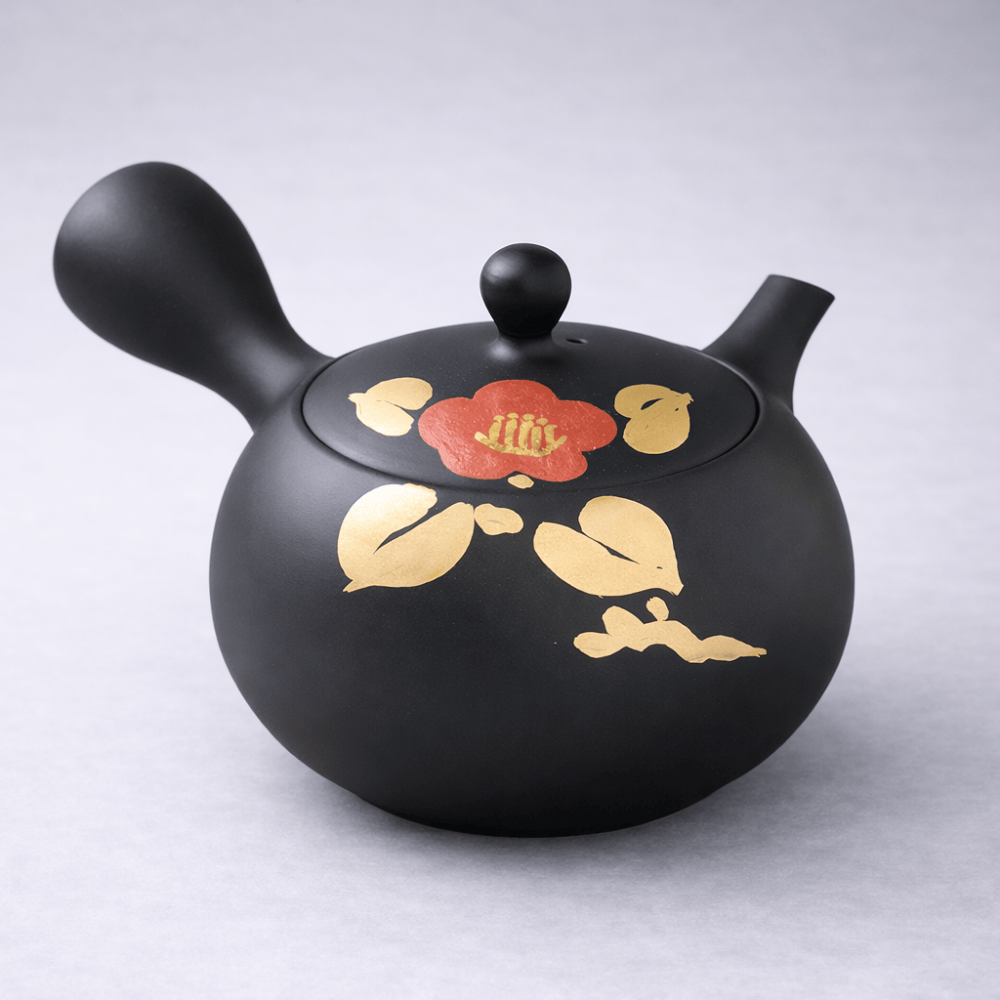
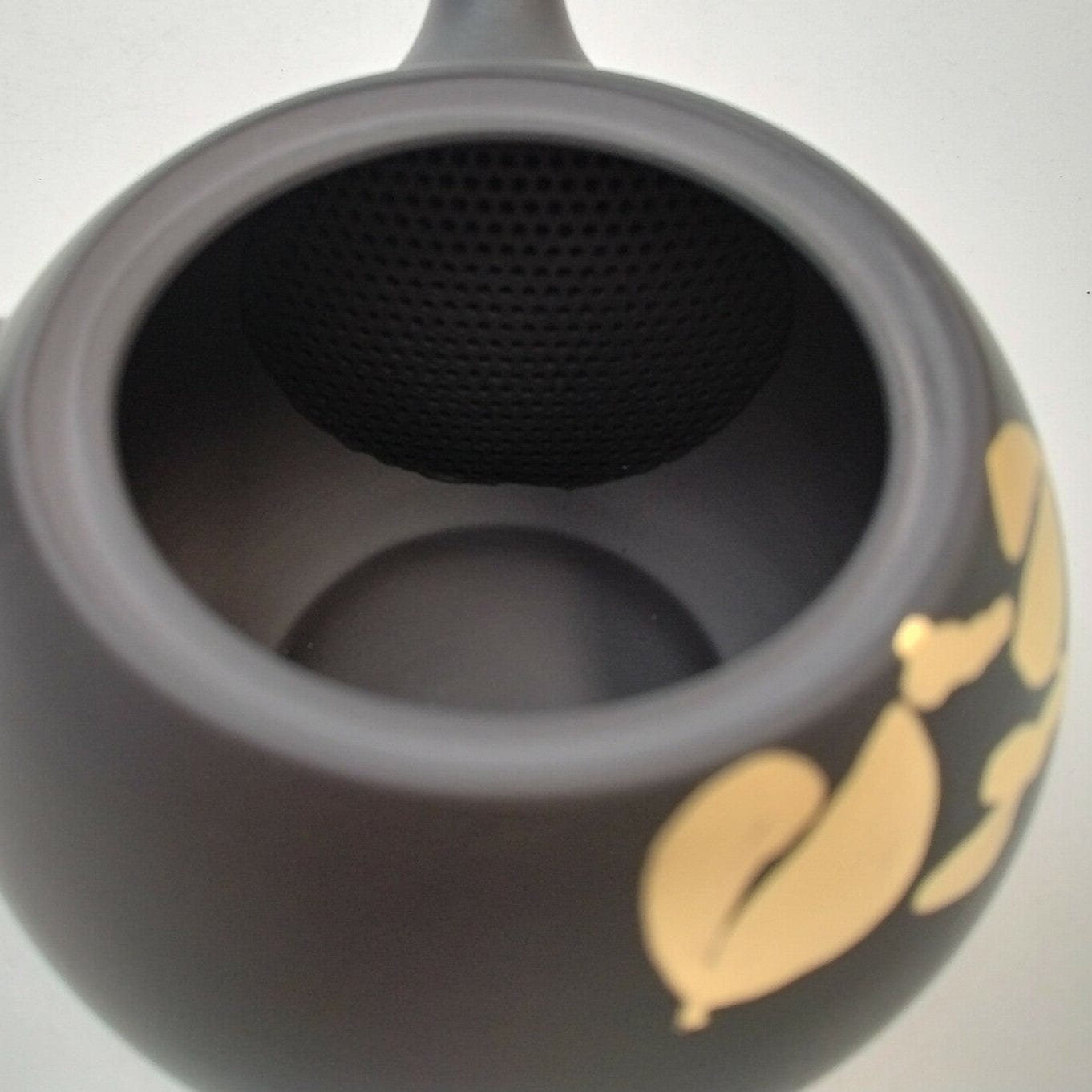

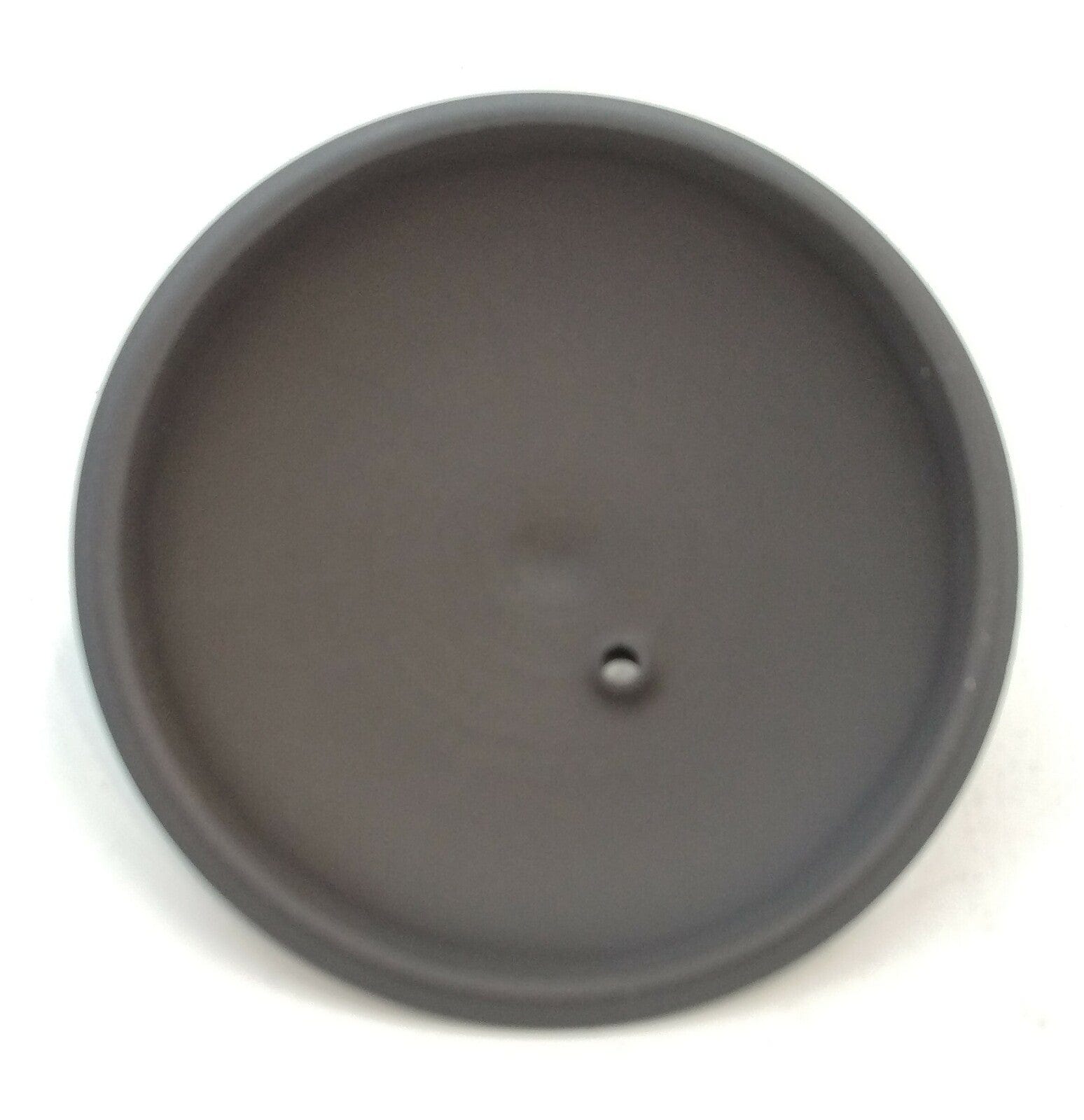
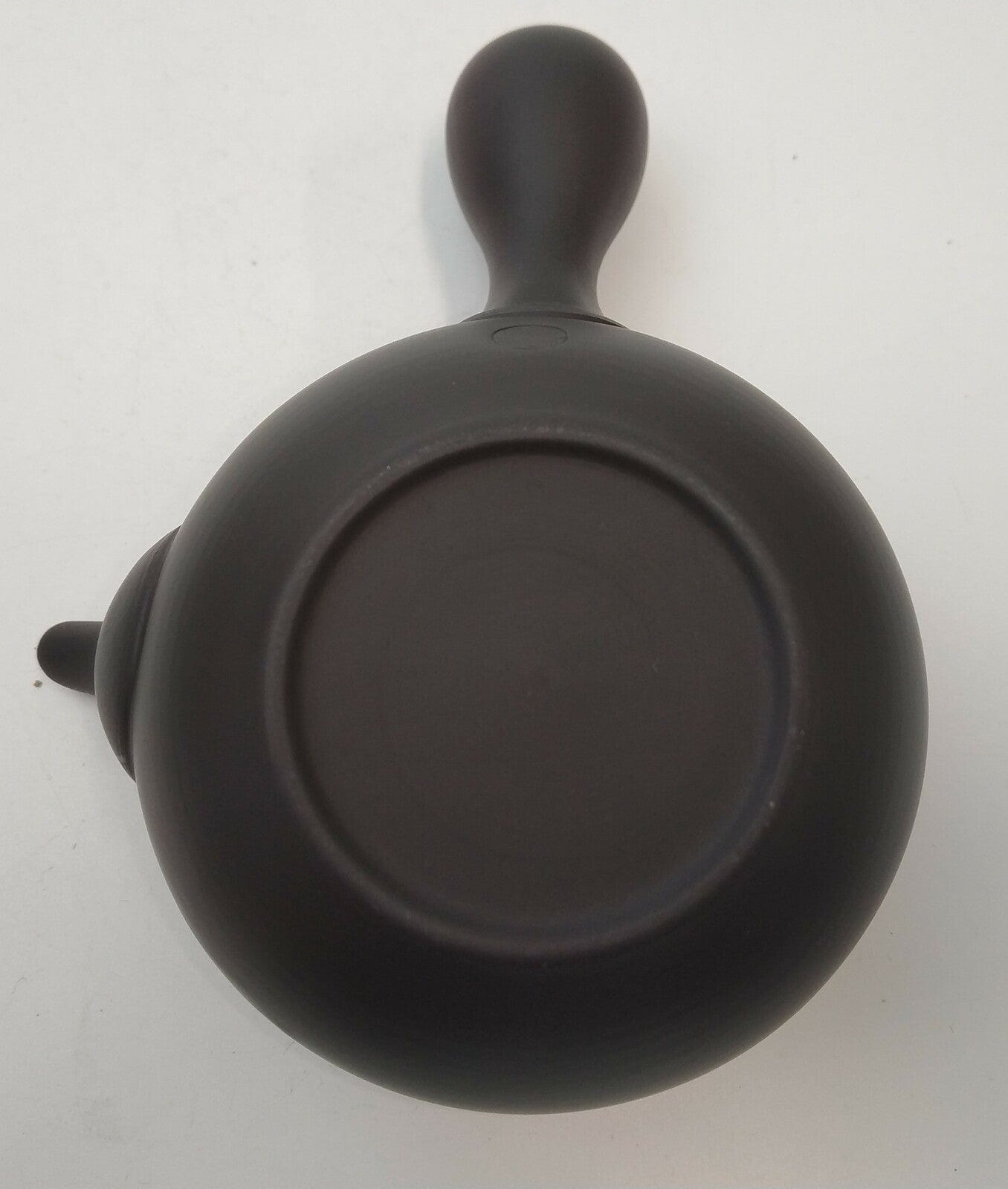
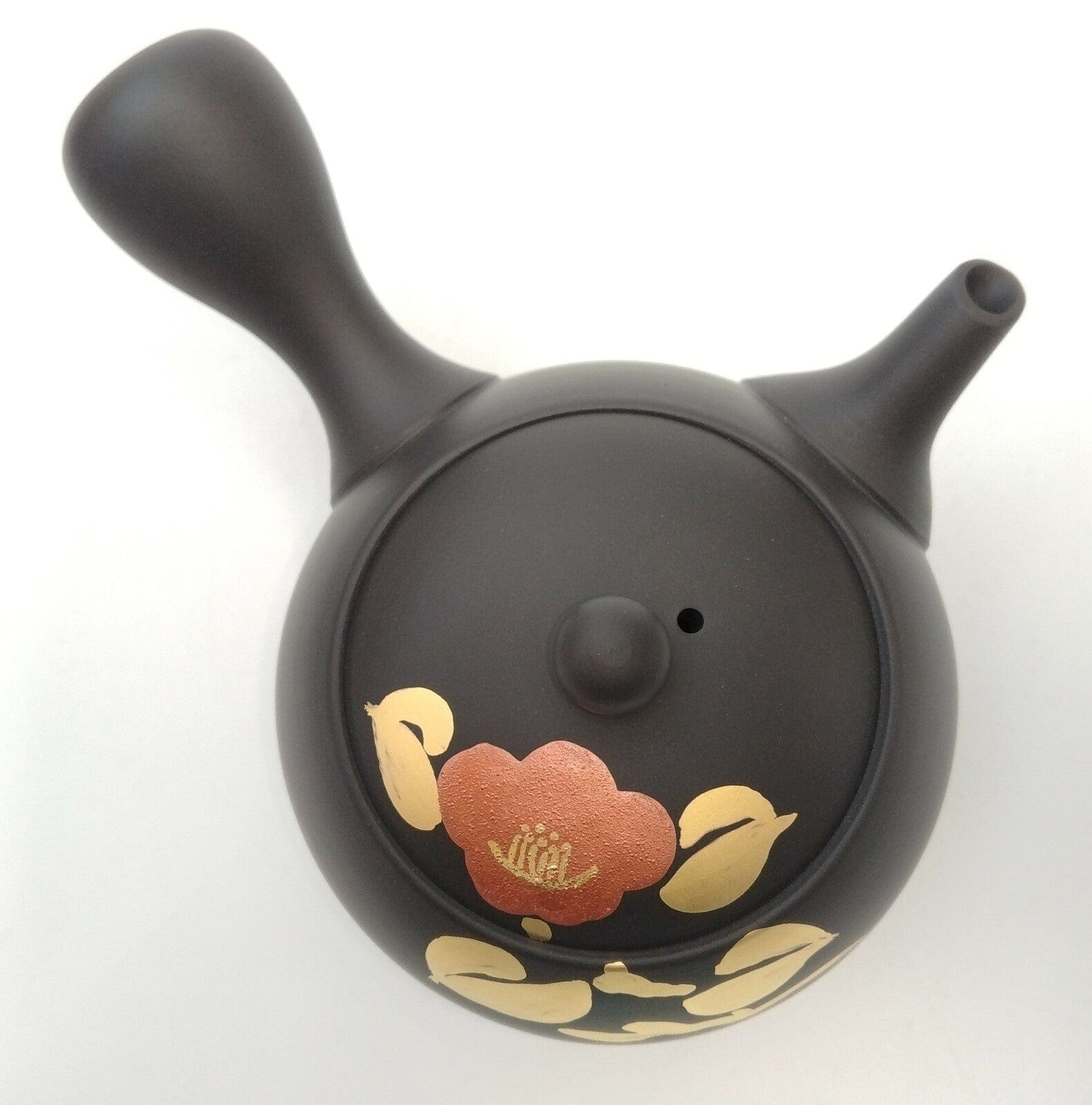
Shomoe black clay small round camellia Tea Pot
Fast & Secure Delivery from Japan to your Door [Shipping Policy]
Shop Safely with Encrypted Checkout and Verified Gateways.
Pairs well with

Shomoe black clay small round camellia Tea Pot
Tradition in Your Hands – Pour Tea with a Century of Tokoname Craft
From the hands of a Tokoname master to your home, the Shomoe Black Clay Small Round Camellia Teapot is a celebration of Japan’s enduring ceramic tradition. This teapot is made in Tokoname, one of Japan’s Six Ancient Kilns, where pottery has been perfected for over 1,000 years. The matte black clay is smooth yet earthy to the touch—evoking a sense of stillness—and is carefully hand-shaped by seasoned artisans recognized by the Japan Traditional Craftsmen Association.
Adorned with a hand-painted camellia bloom in shimmering gold and soft red, the design reflects both the fleeting beauty of nature and the enduring grace of Japanese artistry. The side handle (yokode kyusu) offers ergonomic control and precision when pouring, while the built-in ceramic mesh filter ensures a clean, leaf-free cup every time. With a capacity of 240cc (8.1 oz), it’s ideal for solo or shared tea rituals.
Each piece is unique, with slight variations in color, size, or texture—a mark of genuine handmade authenticity. Whether you're a tea connoisseur or new to Japanese teaware, this kyusu offers a gentle invitation to slow down and savor the moment.
This artisan teapot arrives in a beautifully presented gift box, perfect for marking a special occasion or honoring a loved one with something truly meaningful.
Experience the harmony of form, function, and tradition—brewed into every cup.
Product Information
Care instructions
Note
FAQs
All you need to know about Tokoname Ware.
What is Tokoname ware, and why is it so special?
Tokoname ware (常滑焼, Tokoname-yaki) is a traditional form of Japanese pottery that originates from Tokoname City in Aichi Prefecture, one of the Six Ancient Kilns of Japan. With over 900 years of history, it is celebrated for its distinctive use of iron-rich red clay, which is often left unglazed to allow the clay’s natural beauty to shine. This unglazed surface develops a soft sheen and character with age and use, especially when used with tea. Tokoname ware is renowned for its balance of rustic charm, elegant simplicity, and everyday functionality, making it both a collector’s favorite and a staple of modern Japanese homes.
Why are Tokoname teapots (kyūsu) especially valued by tea lovers?
Tokoname’s side-handled teapots, or kyūsu, are highly prized in Japanese tea culture for their superb heat retention, smooth pour, and the unique way the unglazed clay enhances the flavor of green tea—particularly sencha and gyokuro. The clay subtly absorbs tea oils over time, enriching the aroma and depth of future brews. Many Tokoname teapots also feature built-in ceramic mesh filters, which allow for a clean, refined pour without metal interference. These qualities, paired with minimalist design and ergonomic handling, make Tokoname teapots a must-have for serious tea enthusiasts.
Is Tokoname ware always red? Are there other styles or finishes?
While Tokoname ware is most famously associated with its iconic reddish-brown clay, not all pieces are the same. The region’s artisans also produce wares with black, gray, or ash-glazed finishes, depending on the firing techniques, clay blends, and whether they use oxidation or reduction kilns. Some artists incorporate modern design sensibilities, experimenting with glazes and forms, while others preserve traditional aesthetics. Regardless of style, the unifying theme is a commitment to natural textures, balanced forms, and the philosophy of wabi-sabi—the beauty of imperfection and impermanence.
Can Tokoname ware be used daily, or is it mostly decorative?
Tokoname ware is not only beautiful—it’s also highly functional and durable, intended for everyday use. Items like teapots, cups, planters, and incense holders are made to be used regularly. The clay’s natural heat resistance and strength make it ideal for repeated brewing and handling. That said, as with all artisanal ceramics, a little care goes a long way. Avoid using Tokoname ware in microwaves or dishwashers (especially unglazed pieces), and hand wash with warm water only. With proper care, these pieces can last a lifetime and become even more beautiful with age.
How do I know if a piece is authentic Tokoname ware?
Authentic Tokoname ware is typically handcrafted in Tokoname City by artisans who are part of long-established studios or kilns. Many genuine pieces bear a maker’s seal or signature, often engraved or stamped on the base. You may also find regional certifications or documentation when purchasing from reputable sources. Look for details that reflect handcraftsmanship—subtle variations in glaze, slight asymmetry, or a tactile surface. Buying from trusted retailers or directly from workshops ensures authenticity and helps support the preservation of Tokoname’s cultural heritage.

